9 Proven Ways To Stop A Charging Dog (And 4 Mistakes That Make It Worse)

Coming face to face with a charging dog can be one of the most terrifying moments of your life. Your heart races, time slows down, and you have seconds to react.
Whether you’re a mail carrier, jogger, or just walking in your neighborhood, knowing how to handle an aggressive dog could save you from serious injury.
1. Stand Still Like A Tree
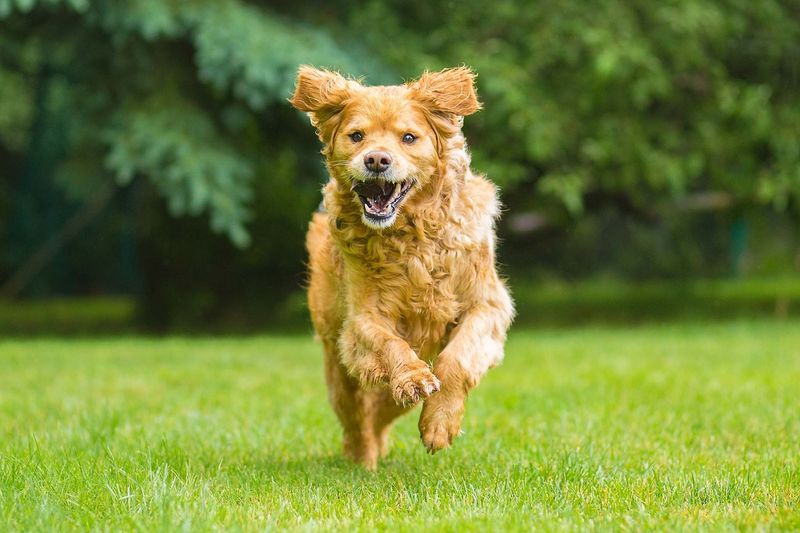
When a dog charges, your instinct screams ‘run!’ Ignore it. Running triggers a dog’s chase response, making the situation worse.
Instead, become a tree. Stand still, feet together, hands folded at your waist or chest. Many dogs lose interest when their target doesn’t move or react. This technique works especially well with dogs who are excited rather than truly aggressive.
2. Command Voice: Project Authority
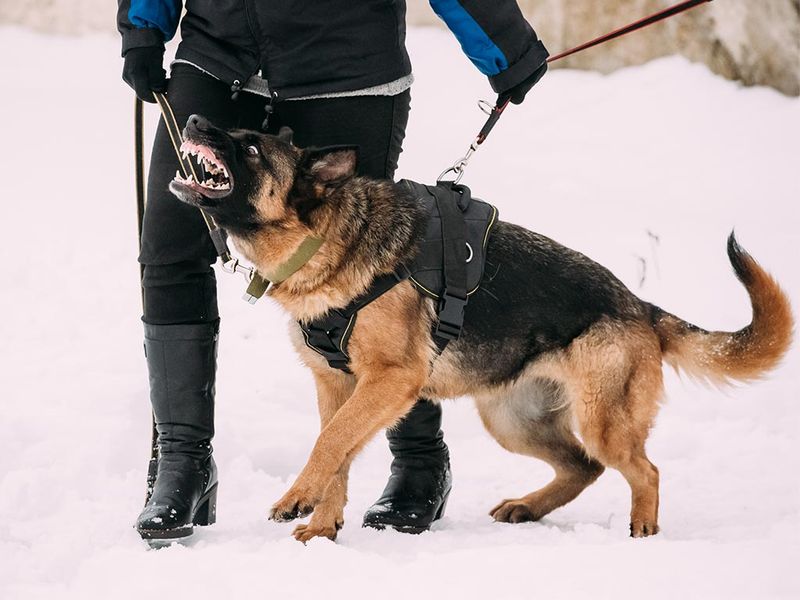
Dogs respond instinctively to confident, authoritative voices. A firm “NO” or “STOP” can interrupt their charging behavior long enough for you to assess your next move.
Keep your command voice low-pitched and steady. High-pitched sounds might excite or frighten the dog further. Many professional dog trainers use this technique as their first line of defense when approaching unfamiliar dogs.
3. Create A Barrier Between You

Quick thinking saves skin! Put something—anything—between you and those teeth. Backpacks, umbrellas, jackets, or even a stick can serve as makeshift shields.
The barrier serves two purposes: it physically blocks the dog and makes you appear larger. Some mail carriers carry dog repellent spray as their barrier of choice. Whatever you use, hold it at thigh level where most dogs aim their bite.
4. Back Away Slowly And Sideways
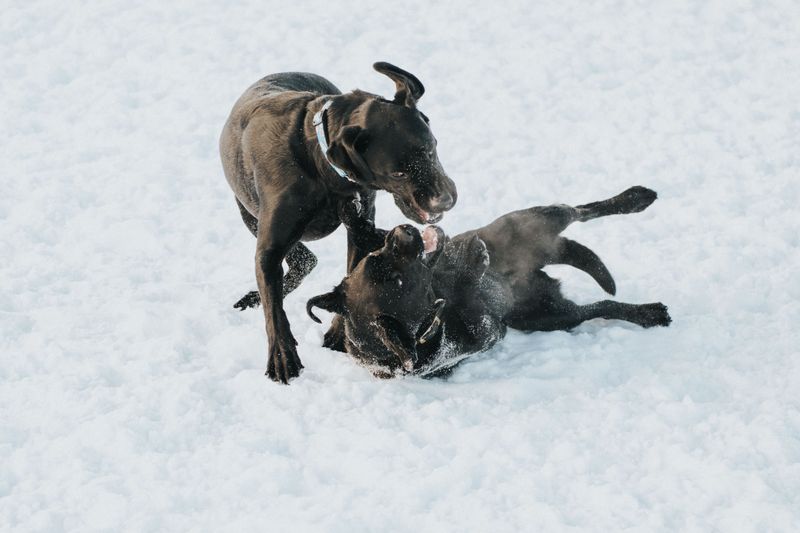
Never turn your back on a threatening dog! Instead, back away slowly without making direct eye contact. Moving sideways appears less threatening to the dog than direct backward movement.
Imagine you’re trying to slide out of the situation rather than flee from it. Keep your movements smooth and deliberate, not jerky or panicked. This technique gives the dog a chance to calm down while you create distance.
5. Use Distraction Techniques

A charging dog can sometimes be redirected with a distraction. Toss something away from you—not at the dog—to divert its attention momentarily.
Food works wonderfully if you have it, but even a stick or your hat might do the trick. Professional dog walkers often carry treats specifically for this purpose. Just be sure to throw the item far to the side, giving yourself time to move away while the dog investigates.
6. Protect Your Vital Areas
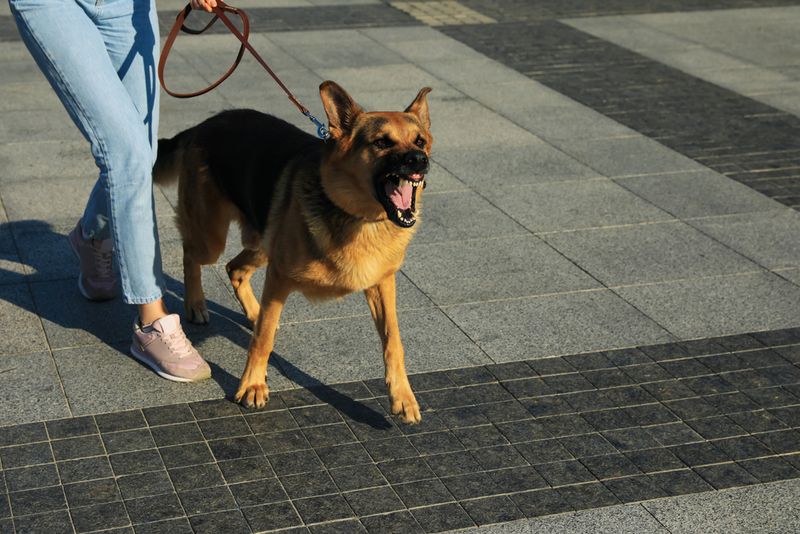
If a dog attack seems inevitable, curl into a ball. Cover your head, neck, and face with your arms. Tuck your knees to your chest to protect your vital organs and stay as still as possible.
This position minimizes exposed areas where a bite could cause serious damage. Children should be taught this technique as they’re often at face-level with dogs. Remember: most dogs will eventually lose interest if you remain still and protected.
7. Carry Deterrent Spray

Postal workers swear by it: EPA-approved dog deterrent spray can stop an attack without causing permanent harm. These sprays typically contain citronella or capsaicin and temporarily overwhelm a dog’s sensitive nose.
Aim for the dog’s face but avoid the eyes if possible. The unfamiliar smell and sensation often interrupts the charging behavior immediately. Many brands clip to belts or fit in pockets for easy access when seconds count.
8. Use Body Blocking Techniques

Professional trainers use body blocking as an effective control method. Stand sideways (presenting a smaller target) and use your leg to create a boundary—not to kick!
Keep your hands up and away from the dog’s mouth. This technique communicates boundaries to the dog without escalating aggression. It works particularly well with dogs that are territorial rather than fear-aggressive, as it establishes clear personal space.
9. Read Dog Body Language

Prevention beats reaction every time! Learning to recognize warning signs can help you avoid confrontation altogether. Stiff posture, raised hackles, and direct staring are clear danger signals.
A wagging tail doesn’t always mean friendliness—look for loose, relaxed body language instead. Animal behaviorists note that most dogs give several warnings before charging. Spotting these early signs gives you precious seconds to implement other strategies.
10. MISTAKE: Running Away In Panic
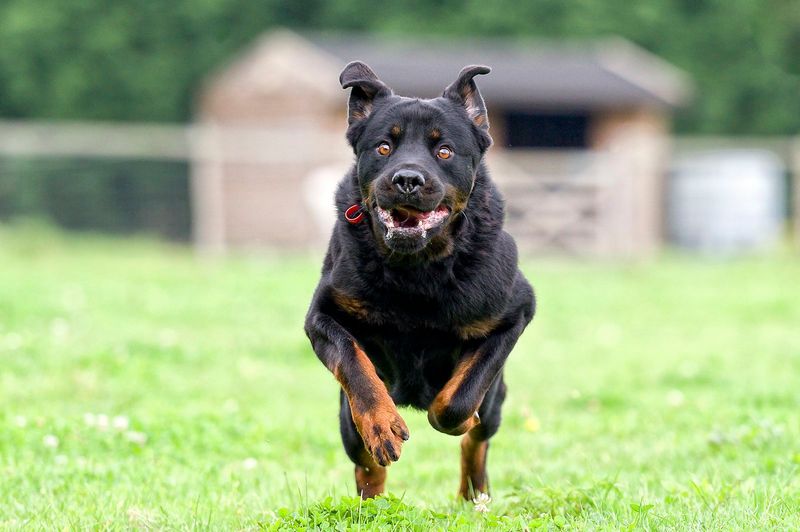
Flight triggers fight! Running activates a dog’s predatory chase instinct faster than almost anything else. Even dogs that weren’t initially aggressive might pursue a fleeing person.
The speed difference is also against you—even small dogs can reach speeds of 15-20 mph. Marathon runners clock about 12 mph at their fastest. Veterinary behaviorists point out that running also exposes your back and legs, making injury more likely if the dog catches you.
11. MISTAKE: Making Direct Eye Contact

In dog language, a direct stare is a challenge or threat. Looking straight into an aggressive dog’s eyes can escalate the situation from warning to attack in seconds.
Instead, watch the dog using your peripheral vision. Canine behaviorists recommend looking at the dog’s chest or feet to monitor movement without provoking. This subtle communication difference respects dog social norms and can de-escalate tense encounters.
12. MISTAKE: Screaming Or Making High-Pitched Noises

Screaming might feel natural when scared, but to a dog, high-pitched sounds mimic injured prey or excited playmates. Either interpretation can intensify their response.
Dogs have incredibly sensitive hearing—they can detect frequencies humans can’t even perceive. Animal behaviorists note that high-pitched sounds can stimulate predatory drive or increase arousal in already excited dogs. Keeping your voice low and calm communicates confidence rather than vulnerability.
13. MISTAKE: Reaching Out To Pet The Dog

“Oh, all dogs love me!” Famous last words before a hospital visit. Never extend your hand toward an unfamiliar dog, especially one showing signs of aggression.
Reaching out can be interpreted as a threat or challenge. Even well-meaning gestures can trigger defensive biting. Dog trainers recommend keeping hands close to your body in any uncertain dog encounter. Remember that a dog charging toward you is clearly communicating that it doesn’t want to be approached.






